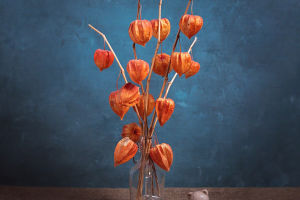Art of Flower Arrangement
Dear Lykkers! Flower arrangement is more than just placing blooms in a vase—it's an intricate art form that requires a keen sense of color, balance, and creativity.
Known as floral design or floral artistry, this age-old practice transforms flowers into breathtaking displays that bring life and beauty to any space.
Understanding the Basics of Flower Arrangement
Types of Flower Arrangements: Flower arrangement styles vary depending on occasion and purpose. Some common types include bouquets, centerpieces, wreaths, and corsages. Each type has its own rules and artistic techniques, but all share the goal of creating harmony between the flowers and their environment.
Elements of Design: Like any form of visual art, flower arrangement relies on principles such as balance, proportion, harmony, and contrast. The colors, shapes, and textures of the flowers must complement each other, while the height and width of the arrangement should be in proportion to the space it will occupy.
Flowers and Foliage: A successful flower arrangement is more than just pretty blooms. Foliage such as ferns, eucalyptus, and ivy play a critical role in enhancing the arrangement. They provide a soft backdrop and help create texture, contrast, and movement within the display.
Flower Arrangement Styles from Around the World
Ikebana (Japan): One of the most revered flower arrangement styles, Ikebana is rooted in Japanese culture. It emphasizes simplicity, minimalism, and the spiritual connection between nature and the arranger. Ikebana arrangements often feature just a few stems and focus on the balance of lines, spaces, and negative space.
Flower Arranging 101: Tips And Tricks For Beautiful Bouquets
Video by TODAY
English Garden Style: This style is the epitome of romance. Featuring a mix of large, voluminous blooms like roses, peonies, and hydrangeas, the English garden style reflects a sense of abundance and casual elegance. Arrangements are often loosely structured, with an emphasis on natural shapes and layering.
Modern Floral Design: For those who favor a more contemporary aesthetic, modern floral design plays with asymmetry, bold color palettes, and unexpected flower combinations. This style embraces minimalism but allows for creativity in the choice of flowers and materials, often using geometric shapes, bold containers, or even non-floral elements.
Tips for Creating Stunning Flower Arrangements
Choose a Color Palette: The first step to creating a beautiful arrangement is selecting a color scheme. You can go for monochromatic designs (using different shades of one color) or contrasting colors, like combining yellow with purple. Ensure that your palette complements the environment where the flowers will be displayed.
Layer Your Flowers: Start with the foliage as a base, then add your focal flowers in the middle, and finally, fill in with smaller, secondary blooms. This layering technique gives depth to your arrangement and keeps it from looking flat.
Use Odd Numbers: One design trick is to work with odd numbers of flowers, as it tends to create a more visually appealing and balanced composition. Grouping flowers in threes or fives often feels more natural than even-numbered clusters.
Decorative Elements to Enhance Arrangements
Vessels and Vases: The choice of container is just as important as the flowers themselves. You can opt for glass vases for a sleek, modern look, or rustic containers like ceramic pots or wicker baskets for a more natural feel. The shape and size of the vase should be proportionate to the arrangement for a cohesive look.
Non-Flower Additions: Adding unexpected elements like branches, stones, or even feathers can elevate a flower arrangement from simple to artistic. These elements bring texture and visual interest to your design and allow you to express creativity beyond traditional florals.
Caring for Your Flower Arrangements
Freshness Matters: To ensure the longevity of your arrangement, always start with fresh flowers. Cut the stems at an angle and place them in clean, room-temperature water. Change the water every couple of days, and trim the stems again to keep them healthy.
Location: Keep your arrangement out of direct sunlight and away from heat sources, as these can cause flowers to wilt faster. A cool, shaded location will extend the life of your blooms.
The art of flower arrangement is a beautiful way to express creativity while celebrating nature's wonders. With a thoughtful approach to design, a dash of inspiration, and a few well-chosen blooms, you can create stunning floral displays that transform any space. Whether you're crafting a small bouquet or a grand centerpiece, mastering the techniques of floral design will bring endless joy and satisfaction to both you and those who admire your work.

